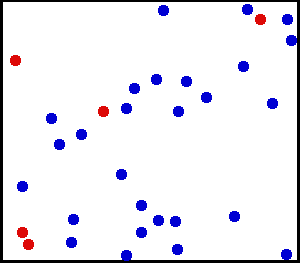First, I will give a brief introduction of the Brownian Motion. It is named after the Scottish botanist Robert Brown who first observed it in 1827. He was using a microscope to look at pollen grains in water when he noticed that the grains kept moving about. At first he thought the pollen was alive but when he boiled it in water and tried again, the pollen grains still moved and Brown was unable to explain it. This was how the Brownian Motion came about.
 This time, due to time constraints, we could not perform the experiment ourselves but the teacher will give a demonstration. Our teacher, Mr Low showed us the Brownian Motion using the projector. the Brownian Motion was shown using smoke put in a smoke cell and with bright light shone through the smoke cell and viewed under a microscope, the smoke particles could be seen as white dots moving about in constant random motion.
This time, due to time constraints, we could not perform the experiment ourselves but the teacher will give a demonstration. Our teacher, Mr Low showed us the Brownian Motion using the projector. the Brownian Motion was shown using smoke put in a smoke cell and with bright light shone through the smoke cell and viewed under a microscope, the smoke particles could be seen as white dots moving about in constant random motion.What exactly causes the bright spots or smoke particles to move then? This is because the air particles which cannot be seen bombard unevenly on all sides of the smoke particles, causing the random and constant motion.
What about if the temperature of the smoke cell is increased? That will cause the smoke particles or bright spots to move faster as there is more kinetic energy due to higher temperature. Also, how can we differentiate between the larger or the smaller particles? We can differentiate them due to the fact that larger particles move around slower compared to smaller particles.
Another parallel of the experiment is to suspend pollen grains or talcum powder in water and observe the movements under a light source or a powerful microscope.
I have learnt a lot on the topic of Brownian Motion and how it occurs today and I hope that there can be more of such experiments where we can come into contact with such natural phenomenon.




